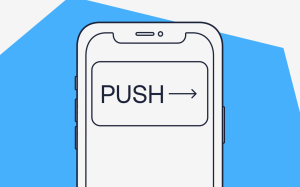Studying the Dynamics: Push vs. Pop Ad Formats
Studying the Dynamics: Push vs. Pop Ad Formats
Blog Article
Inside the ever-evolving landscape of digital advertising, marketers are constantly on the lookout for innovative ways to capture the attention of their target market. Two popular formats who have gained prominence lately are difference between pop and push. While both serve the purpose of delivering promotional happy to users, they differ significantly in their approach and impact. In this article, we'll delve into the distinctions between push and pop ad formats.
Push Ads: A Gentle Nudge
Push ads, since the name suggests, hire a non-intrusive approach to engage users. These ads appear as notifications on users' devices, whether on desktop or mobile, even if they are not actively while using associated app or website. The notifications typically contain concise and compelling messages, encouraging users to take action by simply clicking the ad or exploring further.
One of many key features of push ads is based on their subtlety. They try to gently nudge users, reminding them of products, services, or promotions without disrupting their online experience. Marketers often appreciate push ads for their ability to conserve a consistent presence in users' digital lives without being overly obtrusive.
Pop Ads: The Bold Interruption
Then again, pop ads will be more assertive within their approach. These ads appear as separate windows or tabs that "pop up" over the content users are viewing. Pop ads demand immediate attention, interrupting the consumer experience to deliver the marketing message. They are often characterized by vibrant visuals, compelling headlines, and clear calls to action.
While pop ads could be considered more intrusive when compared with push ads, they can be effective in capturing the user's focus. The sudden appearance and bold kind of pop ads try to make a memorable impact, ensuring that the message just isn't easily ignored. However, the task lies in striking the right balance between attention-grabbing and user-friendly to avoid creating a negative experience.
Buyer experience Considerations
The consumer experience is a crucial factor when searching for the effectiveness of push and pop ad formats. Push ads, using their unobtrusive nature, tend to be more user-friendly. Users hold the flexibility to interact with the notification at their convenience, as well as the overall effect on their digital experience is minimal.
On the other hand, pop ads, or even implemented carefully, can bring about a less favorable user experience. Too many pop-ups or poorly timed interruptions can lead to frustration and could drive users from a website or app. Striking the right balance between visibility and user satisfaction is imperative for your success of pop ads.
In the dynamic arena of digital advertising, choosing between push and pop ad formats needs a careful consideration of the target audience, campaign goals, and desired buyer experience. Push ads succeed in maintaining a subtle, persistent presence, while pop ads boldly demand attention with their immediate and visually striking approach. Ultimately, the prosperity of each format lies in finding the right balance between engagement and user-friendly interaction, making sure the marketing message resonates without compromising the general online experience.